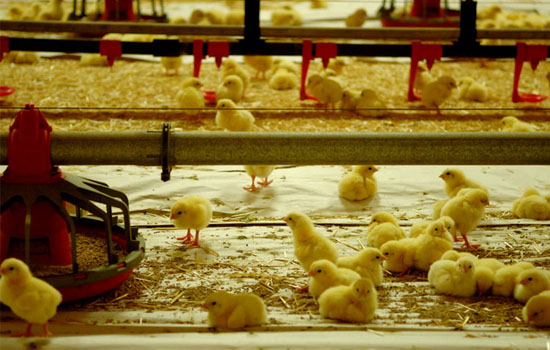How to reduce egg breakage in layer breeding in summer
- font size decrease font size increase font size
Poor feeding and management in summer can easily lead to an increase in the amount of broken eggs, and the broken eggs are not easy to store, resulting in certain economic losses. Therefore, layer farmers should take comprehensive measures to prevent the increase in damage to eggs in summer.
Under high temperature conditions, the feed intake of laying hens decreases, the egg production rate decreases, and the amount of damage increases. Therefore, nutrition control should be strengthened to maintain the heat balance of the chicken body. The calcium in the feed determines the thickness, strength and quality of the eggshell. Under normal circumstances, at the peak of egg production, the calcium content in the feed should be 3.4%-3.9%. Since the egg yolk enters the uterus in the afternoon, if the calcium supply is insufficient during the afternoon, it will affect the calcification. Phosphorus determines the elasticity and toughness of the eggshell. Therefore, when configuring the diet, the phosphorus content should generally reach 0.6%, and the available phosphorus should be 0.5%, and the ratio of calcium to phosphorus should be between 4-6:1. If the ratio of calcium to phosphorus is imbalanced, it will inevitably affect the absorption of calcium and phosphorus and increase the amount of broken eggs.

The most suitable temperature for laying hens is 17 ℃-23 ℃. When the temperature exceeds 30 ℃, the feed intake is significantly reduced, the water consumption increases, the feces are thin, the eggs are small and thin, and the amount of broken eggs increases. It is necessary to ensure good ventilation in the chicken house to ensure that the laying hens breathe smoothly under high temperature conditions; the feces should be cleaned in time to reduce the stimulation of bad gases in the chicken house; if necessary, install exhaust fans to promote the ventilation of the chicken house. In the case of high temperature, auxiliary cooling can be carried out by hanging wet curtains, placing ice cubes, spraying cold water, and building awnings.
Try to avoid loud noises from machinery and vehicles around the chicken house. In addition, adding 0.1%-0.3% vitamin C to the diet of laying hens can also alleviate heat stress, increase feed intake, and reduce egg damage. . In the feeding of laying hens, try to fix the breeder, feeding method and feeding time as much as possible to reduce the number of catching chickens. When performing vaccination, choose to reduce the light at night. Ensure that the laying hens have sufficient drinking water and clean in summer, check the sink every day, clean and disinfect in time. Pick up eggs twice in the morning and at least once in the afternoon. If conditions permit, pick them up again before turning off the lights at night to effectively reduce the number of damaged eggs. Choose a layer battery cage equipment with a reasonable design. Under normal circumstances, the diameter of the iron wire is 2.3-2.5 mm, and the angle of the bottom net of the chicken cage is in the range of 7-8 degrees, which not only ensures the moderate hardness of the iron wire, but also avoids the violent impact of the eggs caused by the excessive angle of the bottom net, and reduces the damage of the eggs. The odds.
Farmers may choose to purchase an egg collection machine, which is more efficient.

